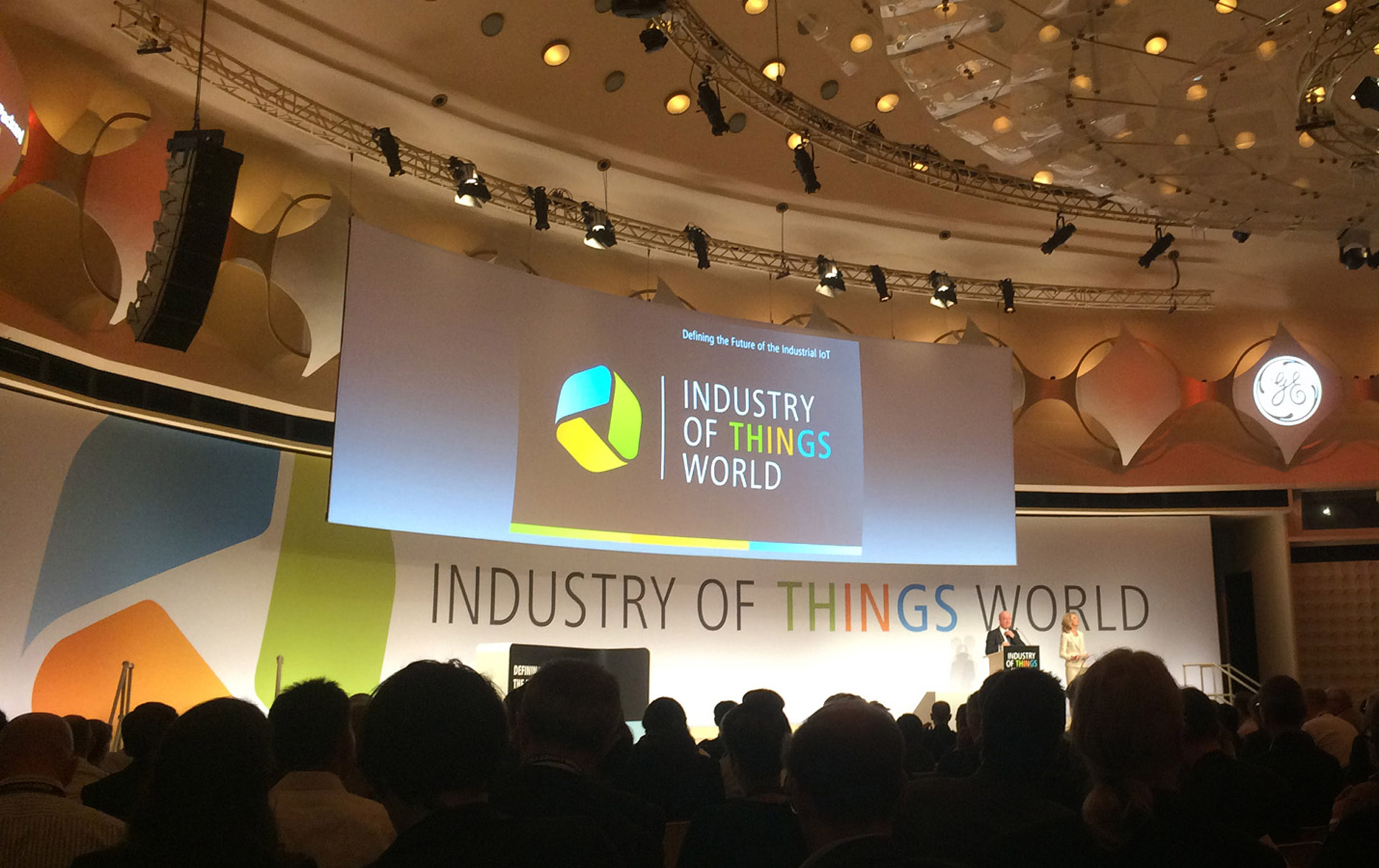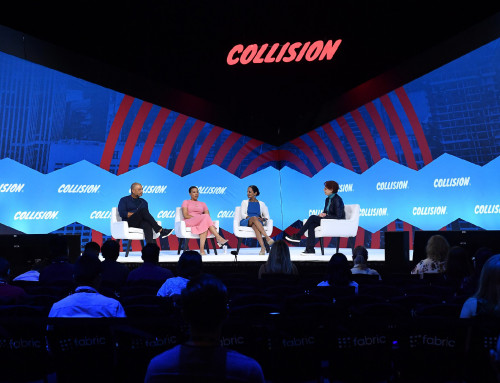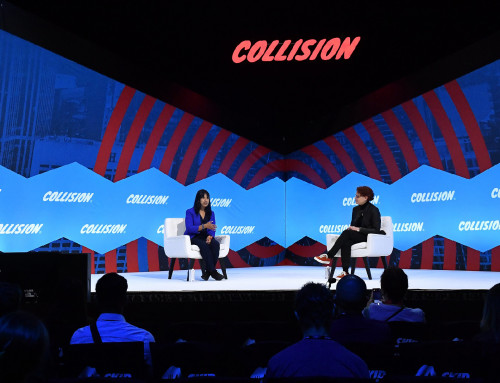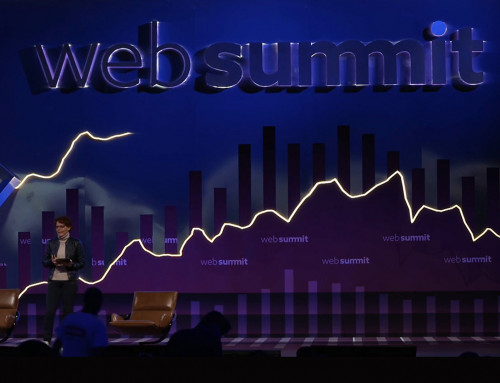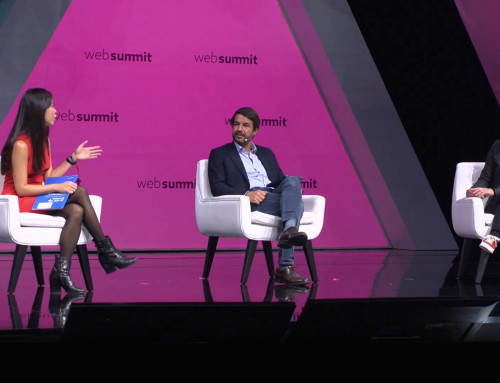Feature Article
October 11, 2016 – by Michael Sauer
There are many different gatherings where delegates and experts from companies all around the world meet, connect and discuss a specific field of interest like IoT. Often startups are invited to show their innovations and to inspire the visitors. In times of Google, Uber, Tesla and Alibaba, big corporations want to learn from startups to mimic their behavior and adapt their concepts as they otherwise fear to get disrupted.
Interesting insights but only few real use-cases
The Industry of Things World 2016 Congress in Berlin was one of those gatherings. Everything circled around the topics of IoT, Industry 4.0, digitalization and cyber-physical systems, depending on how the different parties want to name it and what just fits best their case.
Festo talked about how digitalization will disrupt the traditional automation business and Teradata asked us to think differently about IoT.
Graphic recordings by Benjamin Felis
Google, who would have guessed, advertised the capabilities of big data evaluation and machine learning via the cloud. However, they acknowledged the challenges that security and rights management pose on the task.
According to IBM, today’s business is not about competing on products anymore but rather on business models. Therefore, routines need to be reinvented to create innovation.
In PWC`s view, manufacturing planning is paramount to increase the overall ROI. This calls for an integrated supply chain ecosystem connecting manufacturing with the distribution. In general, the keynotes and the different stream sessions provided the audience with interesting insights into current activities and with predictions on what the future might bring.
Kärcher for example, a company providing us with high quality products to clean up the mess of yesterday’s party, presented an advanced use-case of their online fleet portal. By gathering relevant information of the user’s Kärcher machines in an online portal, new services and functionalities for users are generated.
Caterpillar who want to think like a customer and act like a startup follow a similar approach with their VisionLink portal. This portal lets fleet owners track all relevant live data of their construction machines in order to analyze the usage. On average, this leads to a reduction of necessary equipment by 8%, a 20% increase in fuel efficiency and additional improvements in safety according to Caterpillar.
Bosch Software Innovations, one of Bosch’s many daughter companies, seems to be at the forefront of Industry 4.0 with over 100 implemented pilot projects. These pilots include a use case in logistics using RFIDs, which resulted in a 10% increase in process efficiency and a 30% stock reduction in processes.
But all in all I got the impression that only a few use-cases have actually been implemented. There was no light-bulb-moment as there seemed to be nothing really new. I agonized over what might be the underlying reason.
Graphic recordings by Benjamin Felis
The missing ROI and difficulties in breaking down the vision into small steps
The World Café sessions provided me with some clues. In these moderated sessions delegates got the chance to address and debate common issues, challenges but also possible solutions. In one session about the complexities of IoT, the participants should list their challenges encountered in the planning phase. They eagerly did until the moderator had to switch to the next topic in order to try to roughly keep the schedule.
Apparently there are still a lot of challenges. Two were mentioned several times and received heavy consent. On one hand there are the challenges of a confirmed return on investment. On the other hand there are the difficulties of defining the scope of the solution. One user summarized this in a particularly memorable way:
“We are supposed to dream big and build great visions, but when we take one step backwards and think about how to reach our goal, we are shocked by the sheer amount of effort it might take. That’s when we quickly dispose of our vision.”
Executable steps that don’t necessarily scale
It seems like there are many corporations that struggle to decide how to get to their vision broken down into small steps. Even if they are able to do it the common lack of a confirmed ROI lets seasoned managers focusing on short term success decide against those steps or pilot projects.
Let’s take a look at startups and how they cope with it, which was one of the reasons to invite them to the conference in the first place: Small and quick steps are what makes entrepreneurs and startups successful.
They break down a grand vision into small and executable steps, adapt to changes quickly and always have their vision in mind, regardless of the short term financial success.
Paul Graham, the inspiring founded of extremely successful seed accelerator Y Combinator that helped billion dollar companies like Airbnb, Dropbox and Stripe in becoming what they are now, has one advice for all startups:
Do things that don’t scale. It basically means to do things which don’t provide immediate and scaleable success. It rather helps you to get to know better the product, service or technical solution and its implications, and the potential users.
These insights are an important resource for entrepreneurs on their way to reach their vision. As depicted in Eric Ries’ Lean Startup movements, most of the key aspects for entrepreneurs who are building their company from scratch in their parent’s garage also are true for entrepreneurs (intrapreneurs) within established companies.
Many big enterprises are already trying to implement those concepts by introducing “labs”, organizing hackathons, founding startups within the entity or working closely together with external startups.
These approaches that are designed to help them act like startups are fairly new and started to become more and more popular in the last couple of years. Most of the companies that were present at the congress said to have introduced these concepts already.
However, it seemed like they are just at the beginning. I am curious what these efforts will lead to and what the different outcomes will be – hopefully to be presented at next year’s Industry of World Congress.
Pictures credit: Dirk Hoppe – SCE

